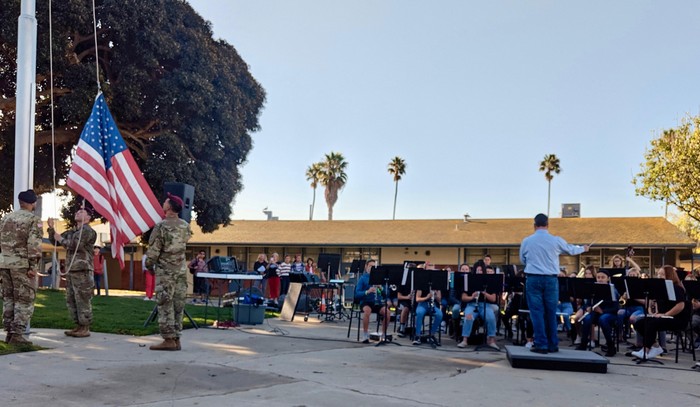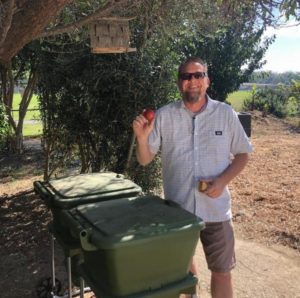National Report on Hate Violence Against Lesbian, Gay, Bisexual, Transgender, Queer and HIV-Affected Communities Released Today
To download the full report please visit NCAVP online
Rates of anti-LGBTQ violence remain consistent in 2013 with 2,001 total incidents reported, with a substantial increase in the severity of violence reported
Transgender women, people of color, and gay men face the highest risk of homicide
Transgender women, undocumented people, transgender people, people of color, and gay men face the most severe violence
Fewer survivors are reporting hate violence to the police, and those reporting are being met with increased police hostility
NATIONAL—Today the National Coalition of Anti-Violence Programs (NCAVP) released its annual report documenting the high level of hate violence experienced by LGBTQ and HIV-affected persons in the United States in 2013. The report, Hate Violence Against Lesbian, Gay, Bisexual, Transgender, Queer and HIV-Affected Communities in the United States in 2013, is the most comprehensive report on this violence in the United States. It draws on data collected from 14 anti-violence programs in 13 states across the country and Puerto Rico. States reporting were: Ohio, Illinois, Colorado, California, Michigan, Massachusetts, New York, Vermont, Kansas, Missouri, Texas, Minnesota, and Arizona.
General Findings
NCAVP’s 2013 hate violence report documents 2,001 incidents of anti-LGBTQ violence in 2013, a slight decrease from the 2,016 total incidents reported in 2012. However, for NCAVP member organizations that reported data in both 2012 and 2013, the number of incidents increased. NCAVP member organization, Sean’s Last Wish, reported data in 2012 but not 2013, while the Civil Rights Commission of Puerto Rico reported for the first time in 2013. The total number of incidents, disregarding data from Sean’s Last Wish in 2012 and the Civil Rights Commission of Puerto Rico in 2013, increased by 3%, from 1,926 incidents in 2012 to 1,984 incidents in 2013. Reports of violence also increased in severity in 2013, with a 21% increase in reports of physical hate violence. The 2013 report continues to document multi-year trends revealing that anti-LGBTQ and HIV-affected hate violence disproportionately impacts transgender women, LGBTQ and HIV-affected communities of color, transgender people, and transgender people of color. Consistent with previous years, gay men represented the largest group of hate violence survivors and victims in 2013, showing that hate violence remains a pervasive and persistent issue for all LGBTQ and HIV-affected people.
Anti-LGBTQ Homicides in 2013
In 2013, anti-LGBTQ and HIV-affected homicides decreased from 25 hate violence homicides in 2012, to 18 hate violence homicides in 2013. Despite this documented decrease, homicides for 2013 remain amongst the highest ever recorded by NCAVP. Additionally, for a fourth year in a row, NCAVP’s findings reflect a disproportionate impact of deadly violence for people of color, transgender women, transgender people of color, and gay men:
Almost 90% of all homicide victims in 2013 were people of color, yet LGBTQ and HIV-affected people of color only represented 55% of total survivors and victims. The overwhelming majority of homicide victims, 78%, were Black and African American, 11% of homicide victims were Latin@, and 11% of homicide victims were white.
Almost three-quarters (72%) of homicide victims were transgender women, and more than two-thirds (67%) of homicide victims were transgender women of color, yet transgender survivors and victims only represent 13% of total reports to NCAVP.
In 2013, 27.78% of homicide victims were men, all of whom identified as gay.
“Here in New York City alone we saw three hate violence homicides in 2013, an unprecedented number. Islan Nettles was a transgender woman, Mark Carson identified as a gay man, Ever Orozco was killed because he was perceived to be gay, and all three victims were people of color,” said Chanel Lopez, Hate Violence Counselor/Advocate at the New York City Anti-Violence Project. “These alarming national statistics – and even more so these tragic deaths – can no longer be ignored.”
Most Impacted Communities: Severity of Violence
The 2013 report found LGBTQ undocumented people, transgender women, transgender people, people of color, and gay men were at risk for the most severe violence. “What emerges clearly in the findings of this year’s report is that many of the people at risk for the most severe hate violence are at the intersection of multiple forms of oppression and discrimination including racism and citizenship status,” said Aaron Eckhardt, Training and Technical Assistance Director at the Buckeye Region Anti-Violence Organization in Ohio. “Anti-LGBTQ hate violence can no longer be viewed in isolation from other forms of violence that our community members are experiencing based on their identities.” The report found:
Undocumented survivors were 3.5 times more likely to experience physical violence.
Undocumented survivors were 2.0 times more likely to experience injury as a result of hate violence and 1.7 times more likely to require medical attention.
LGBTQ and HIV-affected people of color were 1.7 times more likely to be injured and 2.0 times more likely to require medical attention as a result of hate violence.
LGBTQ AND HIV-affected people of color were 1.5 times as likely to experience physical violence compared to white LGBTQ survivors.
Gay men survivors were 1.4 times more likely to experience injury as a result of hate violence, and 1.7 times more likely to require medical attention.
Transgender survivors were 1.4 times more likely to experience threats and intimidation.
LGBTQ Survivors and Police Interaction
The 2013 report also documents a number of troubling findings related to the interaction of LGBTQ survivors of violence with police. Overall, 45% of survivors reported their incidents to the police, a decrease from 56% in 2012. Of those survivors reporting to the police, 32% reported experiencing hostile attitudes from the police in 2013, a slight increase from 27% in 2012. In 2013, 24% of hate violence incidents reported to the police were classified as bias crimes, a substantial decrease from 77% in 2012.
Of those reporting, transgender survivors were particularly likely to experience physical violence at the hands of the police. The report found that transgender survivors were 3.7 times more likely to experience police violence compared to non-transgender survivors and 7 times more likely to
experience physical violence when interacting with the police compared to non-transgender survivors. Additionally the report found that:
Transgender people of color were 2.7 times more likely to experience police violence, and 6 times more likely to experience physical violence from the police compared to white cisgender survivors.
Transgender women were 4 times more likely to experience police violence compared to overall survivors, and 6 times as likely to experience physical violence when interacting with the police compared to overall survivors.
Transgender men were 1.6 times more likely to experience violence from the police, and 5.2 times more likely to experience physical violence perpetrated by the police.
“This year we are seeing fewer survivors reporting hate violence to the police, and those survivors are being met with increased hostility when they do report,” said Christopher Argyros, the Project Manager for the Anti-Violence Project at the Los Angeles Gay and Lesbian Center in Los Angeles, California. “For some of our most impacted communities, especially transgender people and transgender people of color, the hostility and violence faced at the hands of the police is at an alarming level.”
Location of Anti-LGBTQ Hate Violence
The 2013 report also included some important information regarding the locations in which anti-LGBTQ violence is taking place; 43% of hate violence incidents in 2013 occurred in private residences. “What the person to person level data in this year’s report is saying, is that we need to expand our collective notion of where anti-LGBTQ hate violence occurs,” said Lynne Sprague, Director of Advocacy and Co-Executive Director at the Colorado Anti-Violence Program, in Denver Colorado. “For some, hate violence is still very much a public danger, something that happens in the streets, but for many, it is also happening in what we think of as safe spaces, especially private residences, workplaces and shelters.” The report found that:
LGBTQ and HIV-affected people of color were 1.7 times more likely to experience hate violence at the workplace when compared to other survivors.
Latin@ survivors were 2.1 times more likely to experience hate violence incidents at the workplace.
Lesbian survivors were 1.2 times more likely to experience sexual violence, and 1.8 times more likely to experience hate violence in the workplace.
Transgender men were 1.5 times more likely to experience injuries as a result of hate violence and 4.3 times more likely to be the target of hate violence in shelters when compared with other survivors.
Transgender people of color were 1.8 times more likely to experience hate violence in shelters.
Recommendations
NCAVP’s report findings are a wakeup call; LGBTQ and HIV-affected people are facing extremely high levels of violence that need to be addressed as a priority in the United States. “This year’s report makes it unequivocally clear that more must be done to stop this hate violence, and NCAVP’s policy recommendations can serve as a road map,” said Osman Ahmed, NCAVP Research and Education Coordinator at the New York City Anti-Violence Project. “We call on policymakers, advocates, and community members to be a part of the solutions that NCAVP recommends in the 2013 report.” The report recommendations, expanded upon within the report, include:
Ending the root causes of anti-LGBTQ and HIV-affected violence through ending poverty and anti-LGBTQ and HIV-affected discrimination.
Ending the homophobic, transphobic, and biphobic culture that fuels violence.
Ending police profiling and police violence against LGBTQ and HIV-affected people.
Collecting data and expanding research on LGBTQ and HIV-affected communities overall, particularly data and research on LGBTQ and HIV-affected communities’ experiences of violence.
Increasing funding for LGBTQ and HIV-affected anti-violence support and prevention.
NCAVP works to prevent, respond to, and end all forms of violence against and within lesbian, gay, bisexual, transgender, queer (LGBTQ) and HIV-affected communities. NCAVP is a national coalition of 47 local member programs and affiliate organizations in 24 states, Canada, and Washington DC, who create systemic and social change. We strive to increase power, safety, and resources through data analysis, policy advocacy, education, and technical assistance.
NCAVP is coordinated by the New York City Anti-Violence Project
REPORTING NCAVP MEMBER ORGANIZATIONS AND REGIONAL MEDIA CONTACTS
ARIZONA
Wingspan Anti-Violence Programs (Tucson, AZ)
Contact: Patrick Farr, 520-624-1779 x119
[email protected]
CALIFORNIA
Community United Against Violence (San Francisco, CA)
Contact: Maria Carolina Morales, (415) 777-5500 x319
[email protected]
L.A. Gay & Lesbian Center (Los Angeles, CA)
Contact: Christopher Argyros, (323) 860-3717
[email protected]
COLORADO
Colorado Anti-Violence Program (Denver, CO)
Contact: Lynne Sprague, (303) 839-5204
[email protected]
ILLINOIS
Center on Halsted Anti-Violence Project (Chicago, IL)
Contact: Jane Merrill, (773) 472-6469 x412
[email protected]
OHIO
Buckeye Region Anti-Violence Organization (Columbus, OH)
Contact: Aaron Eckhardt, (614) 294-7867
[email protected]
MASSACH– USETTS
Fenway Community Health Violence Recovery Program (Boston, MA)
Contact: Cara Presley-Kimball, (617) 927-6266
[email protected]
MICHIGAN
Equality Michigan (Detroit, MI)
Contact: Yvonne Siferd, (313) 537-7000 x112
[email protected]
MINNESOTA
OutFront Minnesota (Minneapolis, MN)
Contact: Rebecca Waggoner, (612) 384-1355
[email protected]
MISSOURI
Kansas City Anti-Violence Project (Kansas City, MO)
Contact: Justin Shaw, (816) 561-2755 x200
[email protected]
NEW YORK
New York City Anti-Violence Project (New York, NY)
Contact: Sue Yacka, (212) 714-1184
[email protected]
PUERTO RICO
Civil Rights Commission of Puerto Rico (San Juan, Puerto Rico)
Contact: Joel Ayala, (787) 764.8686
[email protected]
TEXAS
Montrose Counseling Center (Houston, TX)
Contact: Sally Huffer, (713) 529-0037 x324
[email protected]
VERMONT
SafeSpace Program at the R U 1 2? Community Center (Burlington, VT)
Contact: Kim Fountain, (802) 860-7812
[email protected]






